It is a fact that consumers and investors are increasingly focusing now their attention on sustainability and ethical practices. ESG management is no longer just a “nice-to-have” but a “must-have” for businesses.
However, implementing effective ESG management is not without its challenges, like:
- Gathering accurate and consistent ESG data across diverse operations and supply chains can be complicated. Different departments may track data differently or not at all, making it a real headache to get a complete and reliable picture.
- Figuring out which ESG metrics are most relevant to your business and then producing reports that satisfy everyone from regulators to investors can be a complex and time-consuming process.
- Lack of expertise since ESG is a relatively new field, and many managers simply don’t have the knowledge and skills to develop and implement effective ESG strategies.
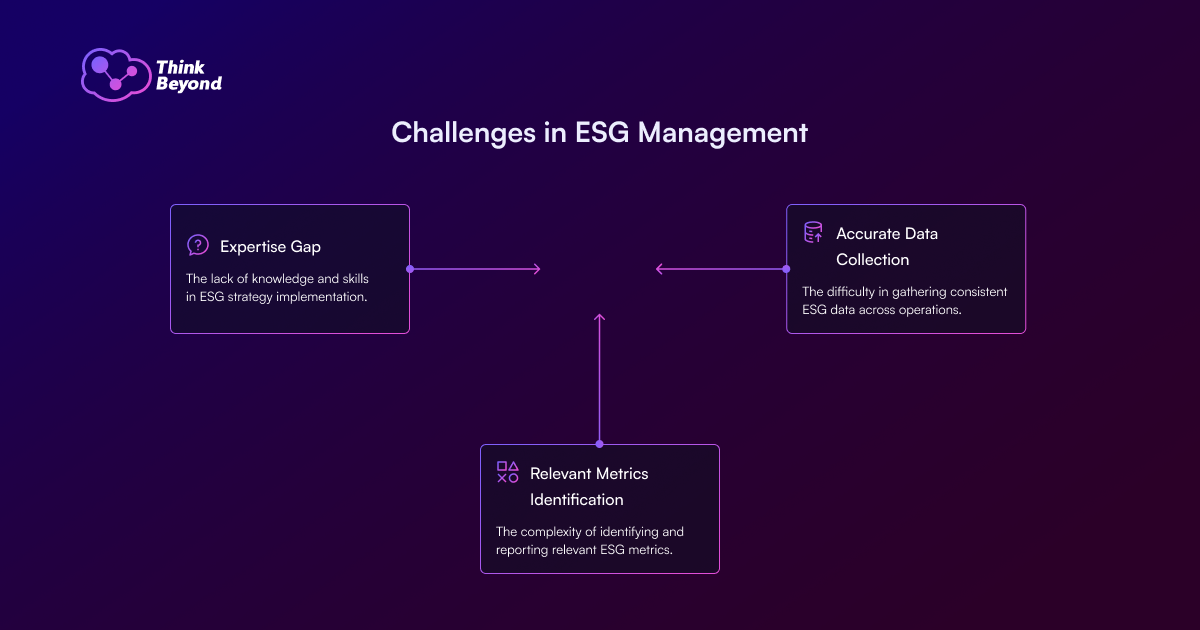
Despite these challenges, the benefits of strong ESG management are undeniable.
Let’s dive deeper and explore how ESG in Salesforce can help you build a more sustainable and responsible business.
What is ESG management?
ESG stands for Environmental, Social, and Governance. It’s a framework that helps businesses and investors evaluate an organization’s sustainability and ethical impact.
- Environmental factors include a company’s carbon footprint, waste management, and resource use.
- Social factors consider how a company treats its employees, customers, and the communities it operates in.
- Governance relates to a company’s leadership, executive pay, audits, internal controls, and shareholder rights.
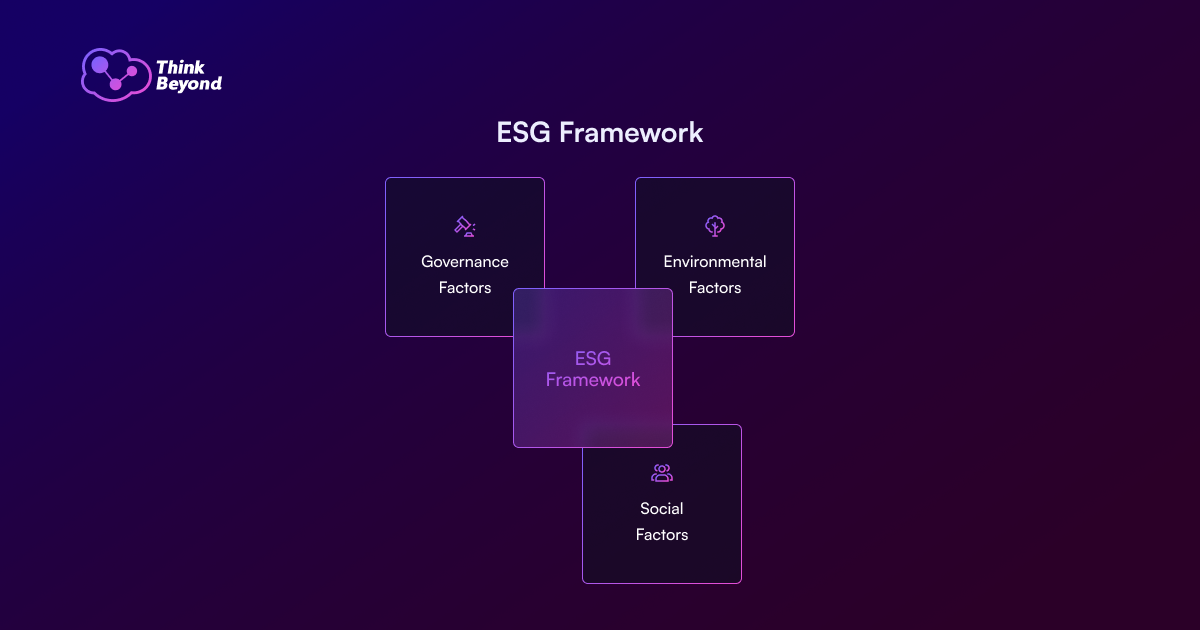
ESG is becoming increasingly important as stakeholders prioritize companies that are committed to sustainability, ethical practices, and long-term value creation.
ESG in Salesforce and the Environmental, Social and Governance Strategies examples
More than just following rules, ESG strategies are about how a company actively manages its impact on the environment and society, while also running its business ethically. We’re talking about weaving sustainability and responsibility into everything a company does, from daily decisions to long-term plans. Doing this isn’t just good for the planet and people; it’s good for business too.
Environmental Sustainability Strategies: Taking Care of Our Planet
This is about more than just minimizing harm; it’s about actively working to restore and protect our environment. We need to cut down on greenhouse gas emissions, from the energy we use to the products we make. Switching to clean energy like solar or wind power is crucial. Being more energy-efficient and finding ways to capture or offset carbon emissions are also important. We also need to use water wisely and handle waste responsibly. Recycling and finding ways to reuse materials are essential. We should source our materials sustainably and protect biodiversity. And finally, we need to reduce pollution in the air, water, and soil. Handling hazardous materials safely and using sustainable packaging are key.
Examples: Investing in solar panels, using closed-loop water systems, or designing products that can be easily recycled.
Social Impact Strategies: Caring for People
This is about how a company treats its employees, customers, and the communities it operates in. We need to think about everyone involved. This means creating a diverse and inclusive workplace where everyone feels valued. It means paying fair wages and providing safe working conditions, as well as offering training and opportunities for growth. Companies should prioritize employee health and well-being. When it comes to customers, we need to make sure products are safe and reliable. Protecting customer data and privacy is also crucial. We should provide products and services that are accessible to everyone and market those products responsibly. And let’s not forget about communities. Supporting local charities and organizations, investing in local businesses, and addressing social issues that matter to the community are all part of this. Companies can also create volunteer programs for employees. Finally, respecting all human rights and making sure that the company does not violate them is essential.
Examples: Setting up employee resource groups, having strong data privacy policies, or partnering with local charities.
Corporate Governance Strategies: Running the Business Ethically
This is about how a company is run, ensuring it’s done ethically and transparently. It starts with the board of directors. Having a diverse and independent board helps make good decisions. Executive pay should be fair and linked to ESG performance. To manage risk, companies need strong policies against bribery and corruption, as well as good internal controls and data security. And importantly, companies need to be open about ESG performance and report it clearly.
Examples: Having a hotline for employees to report concerns, conducting regular board reviews, and publishing detailed ESG reports.
Supply Chain ESG Strategies: Ensuring Responsibility Throughout
This is about making sure that the companies that supply a company are also following good ESG practices. It starts with setting clear expectations for suppliers and checking to make sure they’re meeting ESG standards. But it also involves supporting suppliers to improve their performance. Knowing where materials come from and making the supply chain transparent is also key.
Examples: Using a scorecard to rate suppliers, providing training on sustainable practices, or using technology to track materials.
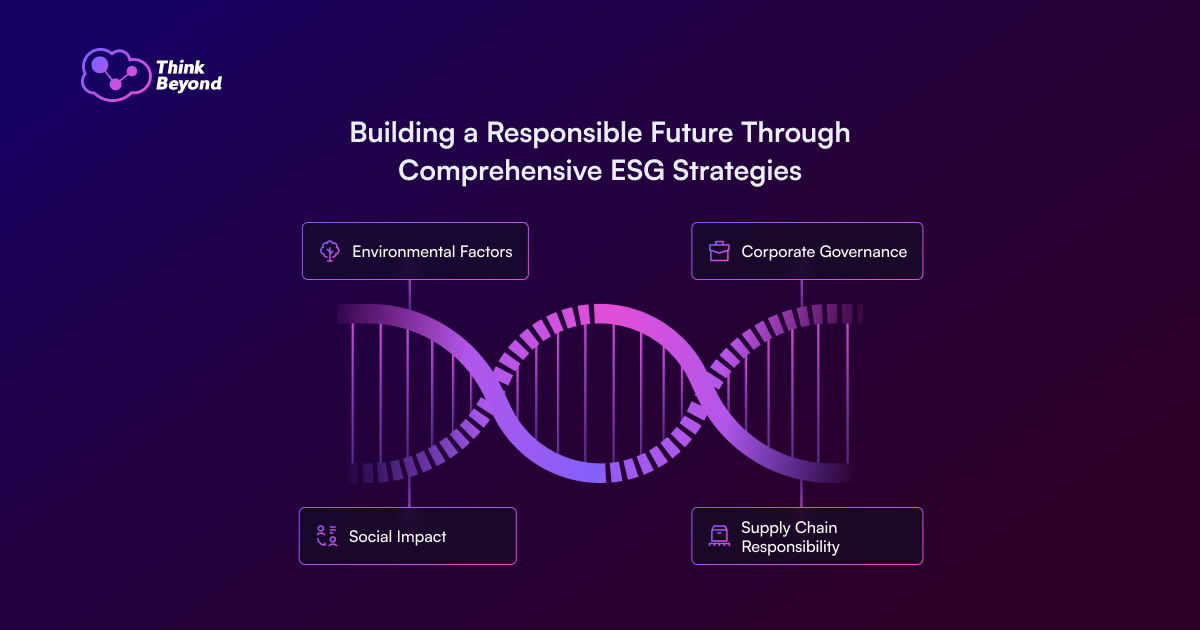
ESG strategies are about building a better future, not just for the company, but for everyone. It’s a long-term commitment. Businesses that embrace these strategies will be more successful and make a positive impact on the world. Let’s work together to create a more sustainable and responsible future.
What tools does Salesforce Net Zero Cloud provide for the ESG management?
Carbon Accounting
Salesforce simplifies the often-complex world of carbon accounting, making tracking and reducing those troublesome emissions easier.
With Net Zero Cloud, you can measure emissions from all parts of your business, from your own operations to your suppliers and even the products you sell. It then converts everything into a common unit (tCO₂e), so you can see your total impact clearly and consistently. Think of it as translating all those different emissions sources into a single language that everyone can understand.
But it’s not just about measuring; it’s about taking action. The solution helps you create an annual snapshot of your emissions and even predicts future trends. This helps you set realistic goals for reducing your impact, following the latest scientific guidelines.
Carbon Projects
Even the best companies have some emissions they just can’t avoid right away. That’s where Salesforce steps in with a special feature: carbon projects. You are doing your best to reduce your own footprint, but you can also support projects around the world that are making a big difference in the fight against climate change.
These projects can involve planting trees, building solar farms, or capturing harmful methane gas. Each project earns “carbon credits,” which are like tokens representing a chunk of emissions reduced or removed from the atmosphere. By purchasing these credits, you’re offsetting your own emissions and investing in a greener future.
Net Zero Cloud makes it easy to find and support these projects. It’s all built right into the platform, so you can track your carbon credit purchases alongside your own emissions data. This way, you’re also contributing to positive change on a global scale. It’s a win-win for your business and the planet!
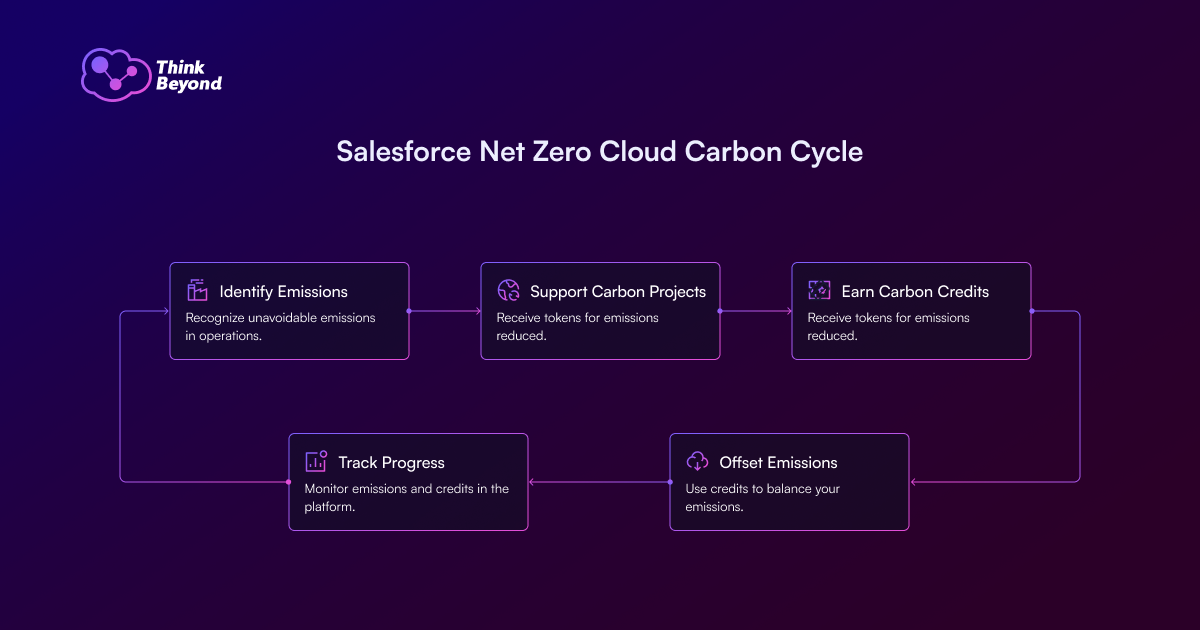
Waste Tracking
You can monitor waste generated from your own operations, such as manufacturing processes or office activities. Additionally, you can track waste generated from the end-of-life treatment of products you’ve sold, giving you a holistic view of your waste footprint.
The Cloud uses key data points for waste calculations, including waste type (e.g., plastic, paper, metal), disposal site type (e.g., landfill, recycling center), the quantity of disposed waste, and waste disposal emissions factors. This data allows you to calculate your waste-related emissions, expressed in tCO₂e, providing a standardized measure of your impact.
Water Tracking
With this tool you understand exactly:
- how much water you’re using,
- where you’re using it,
- and where you might be wasting it.
This is important for any company that wants to be more sustainable.
It tracks water usage across your whole operation, from your offices and factories to the products you make and sell. It’s like having a detailed tracking system for all your water, which shows you exactly how much is going where.
With all this information in one place, you can easily spot areas where you can save water. Maybe you’ll find leaks, outdated equipment, or processes that could be more efficient. This solution helps you make smart decisions to reduce your water footprint and become a more environmentally responsible business.
Suppliers
Want to make your supply chain more sustainable? Net Zero Cloud helps gather emissions data from your suppliers, giving you a clearer picture of your entire value chain. You can create scorecards to track how well your suppliers are doing on their own sustainability journeys:
- Are they reporting their emissions?
- Are they setting ambitious targets?
You’ll have all the information you need to make informed decisions.
This transparency helps you choose suppliers who share your commitment to sustainability. Additionally, it allows you to work together to identify areas for improvement and drive positive change across your entire network.
Emissions Forecasting
Net Zero Cloud allows you to generate forecasts at different levels. You can create an overall forecast for your entire company, giving you a big-picture view of your projected emissions. But you can also drill down and generate forecasts for specific business activities. This could include things like business travel, electricity used across your offices and facilities, or even emissions associated with specific product lines.
To make forecasting even more powerful, it uses what are called “business activity types” to calculate your carbon inventory. These activity types represent different sources of emissions within your business. For each activity type, you can set emissions reduction targets, forecast your carbon emissions, and even manage carbon offsets. This granular approach gives you fine-grained control over your emissions management strategy.
By combining historical emissions data with your planned initiatives, the forecasting capabilities help you:
- Anticipate future emissions: Understand your projected environmental impact and identify potential risks.
- Set realistic targets: Develop achievable emissions reduction goals based on data-driven insights.
- Track progress: Monitor your performance against targets and adjust your strategies as needed.
- Communicate effectively: Share your forecasts and demonstrate your commitment to sustainability with stakeholders.
With Net Zero Cloud’s forecasting tools, you can move beyond simply measuring your current emissions to proactively planning for a low-carbon future.
CRM Analytics
Through CRM Analytics (formerly Tableau CRM), Net Zero Cloud provides interactive dashboards that visualize key sustainability metrics, enabling data-driven decision-making and effective communication with stakeholders.
Here are a few examples of the standard dashboards:
- Building Energy Intensity: It provides a detailed view of energy consumption across your buildings and facilities.
- Business Travel Impact: It helps you understand the environmental impact of your business travel activities.
- Climate Action: It provides a high-level overview of your overall climate action progress. It tracks key metrics such as your carbon footprint, emissions reduction targets, and the impact of your carbon offsetting initiatives.
- Carbon Credit Allocation: It provides insights into your carbon credit portfolio. You can track the types of carbon credits you’ve purchased, their origin, and their allocation to specific emissions sources.
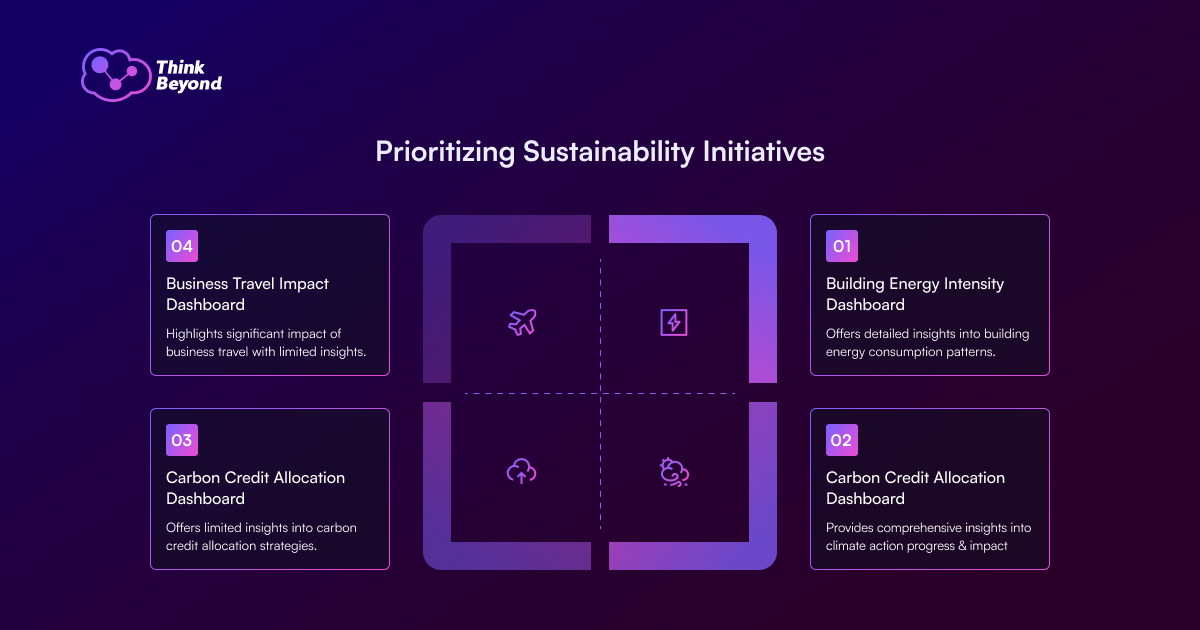
These are just a few examples of the many dashboards. The platform also allows you to create custom dashboards tailored to your specific needs, giving you the flexibility to visualize and analyze the data that matters most to your organization.
Attract Investors, Reduce Risks, and Build a Better Future with Salesforce ESG Solutions
Everyone’s talking about ESG these days. It is a major shift in how businesses operate and investors make decisions. A recent PwC report predicts that ESG-focused investments will almost double in the upcoming years, reaching a whopping $33.9 trillion by 2026. That’s a significant amount of money flowing towards companies that are doing good for the planet and society.

Source: PWC
So, what’s driving this trend? People are simply expecting more from businesses. Customers, employees, and investors want to support companies that align with their values. New rules and regulations are coming out around the world that require companies to be more transparent about their environmental and social impacts. One example of this is the Corporate Sustainability Reporting Directive (CSRD), which is pushing businesses in Europe to step up their environmental, social and governance (ESG) game.
With all this happening, it’s no wonder that businesses are working to implement ESG management. Salesforce Net Zero Cloud is a solution that can help.
With our comprehensive suite of Salesforce development services, we assist businesses of all sizes in navigating the intricacies of ESG. Whether you’re just starting your ESG journey or looking to take it to the next level, we have the tools and expertise to help you succeed.

